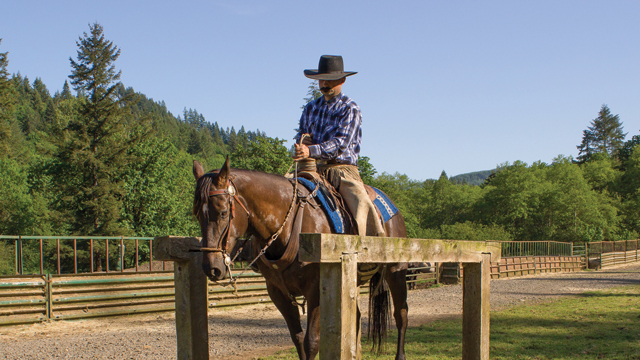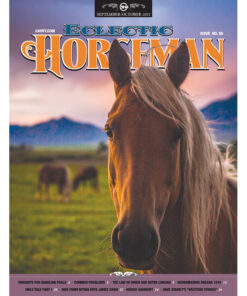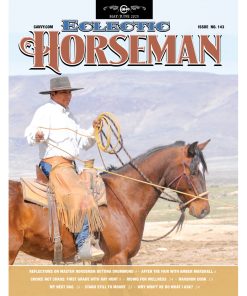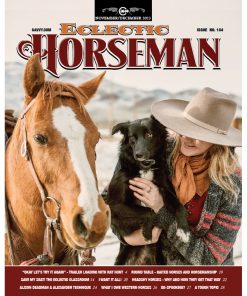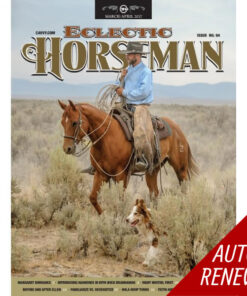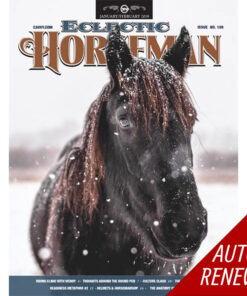It was an ordinary late summer day—dry and warm—the perfect moment to be on horseback. We had been riding daily since mid-June and had led almost one-thousand kids the ages of eight, nine, and ten out on trail rides; most of them were first-time riders and all incident free. The wrangler crew had spent countless hours in the saddle. They had all been through many formal as well as informal classes. Training for both wranglers and horses had become routine many weeks prior. One of the first things learned by wranglers in training is the importance of safety checks. This is the last thing always done before mounting and much like a preflight check that makes airplanes that were once thought to be unflyable, flyable. The safety check is a routine inspection that prepares a horse and rider for the ride.
Today was no different from any other day at the ranch with lots of riding and kids and plenty of fun with horses, except for the fact that familiarity and complacency had crept into the wrangler crew. It is common after a group of riders leave for meal time for the wrangler crew to pick a horse and canter as a group the one-fourth of a mile or so up to the dining hall. After a long morning at the barn, lunch and much needed rest is always looked forward to. But on this day, everything changed. Roger grabbed Jona, one of the most reliable kid’s horses, and headed to lunch. In a short distance, Roger queued for a canter and was off. Just behind him was the rest of the wrangler crew in hot pursuit. Up and around the corner they went at full speed, and the wranglers watched helplessly as Jonas’ saddle slipped and Roger came crashing to the ground. Roger had forgotten (neglected) to do a safety check, letting familiarity and complacency become habits. Ringing in Roger’s ears were the words we are to repeat every time we mount: “Do a safety check and mount up!”
Many common horseback riding accidents can be avoided by doing a simple four-part safety check. Completing a good safety check every time you mount only takes a few moments and will allow you to enjoy a lifetime of incident-free riding. Beginning while the horse is being tacked up, the rider focuses with an educated eye on these four crucial areas: Yourself, the horse, your tack, and the environment.
#1 Start with yourself, making sure as a rider that you are dressed for success. That means long pants, good riding boots, with a smooth sole and heal, clothing that is neither too tight nor too loose, no hanging items that could get caught (especially around the neck), as well as proper, protective headgear. Wear either an ASTM-certified helmet or a western style hat. Also, check your attitude. This can oftentimes be one of the most important parts of the safety check. Be mentally ready, present, and an encouragement to yourself by using positive self-talk.
#2 Your horse is your partner, and as the leader, you are expected to make sure he or she is able to perform. Check for any cuts, wounds, abrasions, swelling or hot spots. Pay attention to your horse’s attitude, making sure that they are able and ready to be a willing partner. Do enough groundwork to establish a baseline for a quality relationship. Most of us ride because we love horses; a little extra time doing groundwork to make sure your horse is comfortable and willing will be well worth the effort.
#3 Your tack. This can oftentimes be an area that some riders don’t understand fully. We do what we always have done, but a little education and paying attention will really pay off. Saddle pads or blankets need to be cleaned and free of debris. Hay and pine needles can cause irritation and sores; pick or brush them away. Ensure there are no folds or wrinkles, and your saddle pad should be pulled up into the gullet of the saddle. Blanket and saddle pads should be straight and even with as much extra in front of your saddle as in the back. The saddle should be fit properly and match the horse’s back. The underside should be routinely checked for lump, bump, and nails protruding through the fleece. The saddle should be properly set in the saddle pockets on the horse’s back, just on and behind the withers. As you go to the off side, make sure no straps or saddle strings are tucked under the saddle. Also carefully inspect all of the components that hold your saddle securely to your horse. This would include the rigging, D-rings, latigo, as well as the cinch or girth. They should be free of cracks and have appropriate but not excessive wear. It is also very important that you inspect all of the components that hold you in the saddle. This mostly means stirrups, stirrup leathers and fenders. All of these items should be crack and tear free as well as supple enough to move freely. It is a good idea to get your saddle safety inspected and repaired yearly by a professional. Also important but oftentimes neglected is the bridle. A bridle should not only be in good repair, adjusted properly and fit to the horse comfortably; it should also be appropriate for the level of knowledge and training of both horse and rider. If you are using the headgear commonly used for the horse, a quick check of wear areas, chicago screws, as well as proper adjustment will generally suffice.
#4 The environment. This will include all of your surroundings. If you are in an arena, it may mean that you check that gates are shut, that all of the obstacles and equipment you will not use are picked up. Don’t forget to do a once-over of the fencing. Also be observant of items such as coats, chip boards, banners, mounting blocks, trot poles, flags and all other spooky things that accumulate in a riding area. The environment also includes the weather: cold, hot, wet, windy, or icy. Are you prepared? Maybe it’s not a big deal on a short trail ride, but if you are going to be out all day, what will you need? What if you or someone you are riding with has an emergency?
A good safety check only takes a few moments to do and should be a habit for every time you mount. Check both sides of your horse, look over the saddle, saddle pads, as well as the bridle. Check any gear you may have tied on your horse, check yourself, tighten your cincha and reach up and tap your head to make sure you have your protective headgear on. It is that simple and takes just a few moments. Jim Rohn says that what is easy to do is also easy not to do. Be safe. Do a safety check every time you mount; it could make a world of difference.
Oh, I almost forgot to finish telling you about Roger. Well, he neglected to do a safety check; he didn’t check or tighten his cinch and crashed in the middle of the road at a canter. It was a bad day for Roger. You will be happy to know that the doctors expect him to make a full recovery. He should be as good as new in eight to ten weeks and ready for another ride.
Think safety. Do a safety check!
Happy trails!
Bring horsemanship home. Subscribe today!

